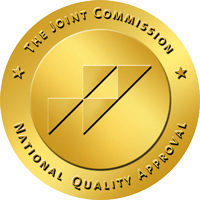The most prescribed opioid painkiller is also a huge contributor to the epidemic of abuse. Hydrocodone is good for managing pain but can also lead to dependence. Developing a dependence can quickly turn into the need for hydrocodone addiction treatment.
Doctors prescribe hydrocodone after surgery or injury. The common use of this drug gives a false impression that it is safe. A person thinks there’s no harm in taking the drug long after their pain ends.
Signs Someone Needs Hydrocodone Addiction Treatment
 The potency of hydrocodone can create a compulsive need for the drug no matter the consequences. The best solution at this point is a hydrocodone addiction treatment center in California.
The potency of hydrocodone can create a compulsive need for the drug no matter the consequences. The best solution at this point is a hydrocodone addiction treatment center in California.
Telltale signs exist when a person is abusing this drug. These include:
- Using up a prescription before the next refill
- Snorting or injecting the drug for faster relief
- Craving more of the drug before the next dose
- Finding ways to get hydrocodone after the doctor ends a prescription
- Suffering flu-like symptoms or pain if one day passes without the medication
- Doing things out-of-character to get hydrocodone
Displaying any of the above signs may signal a person needs hydrocodone addiction treatment. Loved ones witnessing these behaviors should look into available programs.
Detox for Hydrocodone Addiction Treatment
Convincing someone they need help from a hydrocodone addiction treatment center in California is a hard task. Getting them to agree introduces another challenging aspect of overcoming an addiction: detoxification.
Of course, it’s best to complete detox in a medically-assisted facility. They receive medication to help them taper off the drug. This also gives the person a safe environment to battle uncomfortable hydrocodone withdrawal symptoms.
Cessation of hydrocodone produces extreme withdrawal symptoms. How long, how often, and how much hydrocodone a person takes all factor in to determine what happens. Generally, severe addiction will lead to a severe withdrawal. Medication reduces the negative impact of a person’s experience.
It can take up to one week or longer for a person to detox. The first 48 hours usually produces symptoms like nausea and aching muscles. Those aches may also linger over the next 3-5 days. Vomiting and excessive sweating peak during this time as the body expels more toxins.
Physical symptoms subside over the next several days. This is when hydrocodone addiction treatment starts to focus on the psychological side.
Hydrocodone Addiction Treatment at a Residential Facility
Remaining in an environment that encourages drug abuse does not help a person struggling with addiction. They can go through treatment in outpatient settings and soon relapse into former addictive behaviors. Residential treatment programs shield them from such consequences.
These programs seclude the person from external pressures to use hydrocodone. Residential programs also remove them from daily stresses that increase temptation.
Personalized programs may include individual, group and behavioral therapies to uncover the root of addiction. A residential hydrocodone addiction treatment center in California also teaches the person how to handle triggers.
Knowing the underlying conditions driving a hydrocodone addiction improves their chance of recovering fully. They gain mental and social tools to avoid relapse after treatment ends.
Get Help for Hydrocodone Addiction Today
Pillars Recovery is an alcohol and opioid addiction treatment center with several locations in Orange County, California. Our beautiful beach settings offer a serene and safe place for you to overcome an addiction to hydrocodone.
Programs and services provide hope for a full recovery. Our residential treatment program begins with detox and continues with therapies such as:
- Individual and group therapy
- Family therapy program
- LGBTQ affirmative therapy
- Recreational therapy
- Art therapy
- Acupuncture and massage
Your call to us at 8667820247 is always confidential. We can help you regain the life a hydrocodone addiction tried to take. Finally, call today and learn how an individualized program can place you on the road to recovery.
